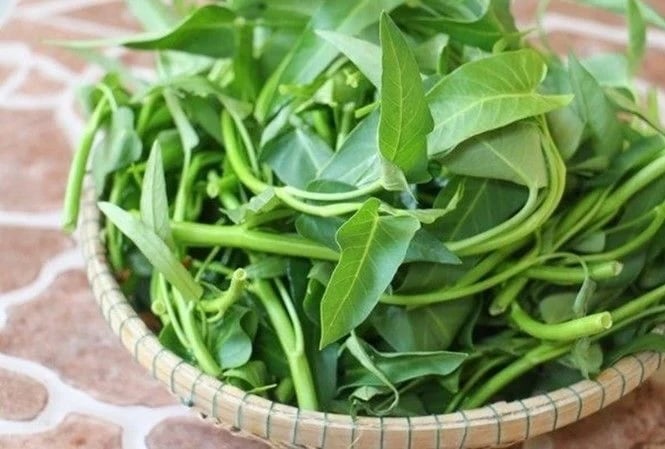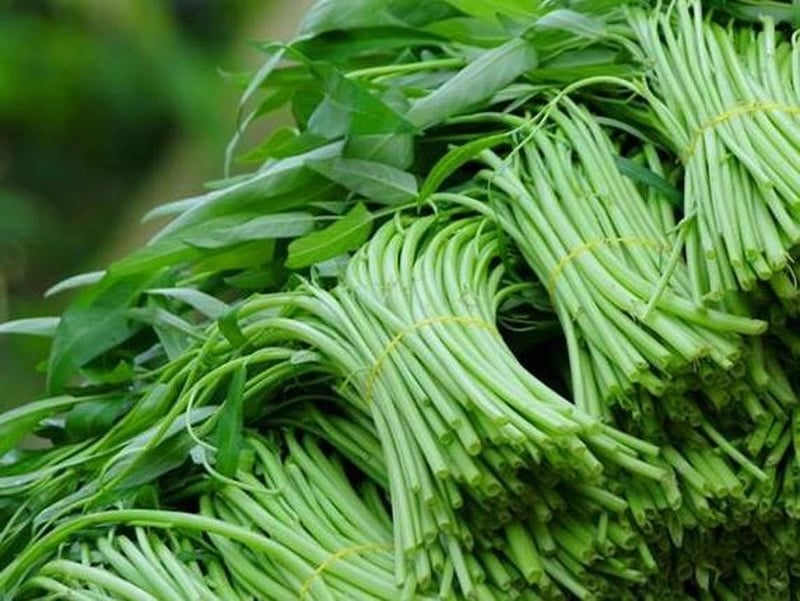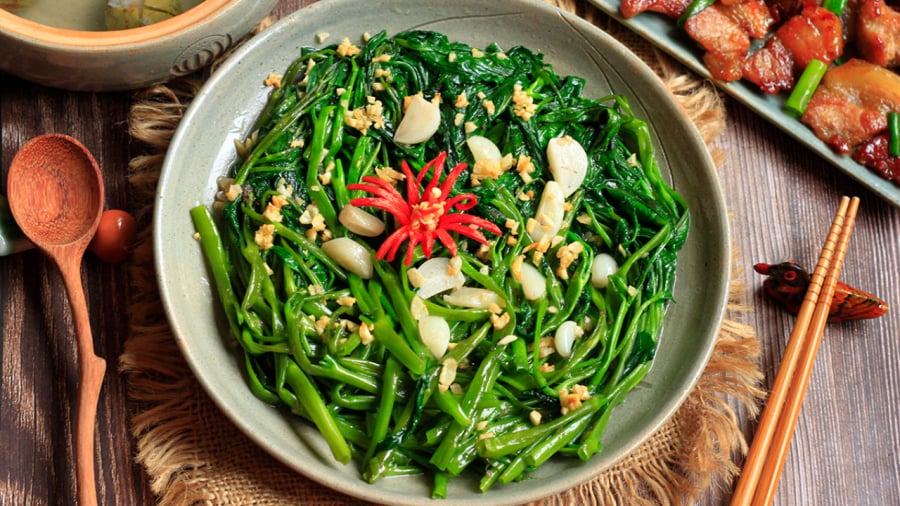Water spinach, or rau muống, is a popular vegetable in many Asian cuisines, and for good reason. Its unique flavor and texture make it a favorite among chefs and home cooks alike. But did you know that water spinach is also a nutritional powerhouse?

The versatility of water spinach: a delicious ingredient for raw, pickled, stir-fried, boiled, or soupy dishes
Water spinach is particularly rich in potassium while being low in sodium, making it an ideal choice for those watching their blood pressure. Its high fiber and low-fat content also help regulate cholesterol levels effectively. Additionally, water spinach is an excellent source of iron, which is especially beneficial for those dealing with anemia, including pregnant women.
One of the most popular ways to prepare water spinach is by stir-frying it. However, a common issue many people face when stir-frying water spinach is that it tends to turn a dull color. While it still retains its delicious crispness, the unappetizing color can be off-putting.
According to expert chefs, the high iron content in water spinach is the culprit behind this discoloration when exposed to high temperatures. To maintain the vibrant green color and glossy appearance of the vegetable, chefs recommend soaking it in a special solution before cooking.
Ingredients:
– 1 bunch of water spinach (opt for young, medium-sized bunches with longer stems for the best flavor)
– 1 lemon or lime
– Cooking oil of your choice
– Seasoning powder or fish sauce
– 5-6 cloves of garlic

Choose young, medium-sized bunches with longer stems for the best flavor and texture
Instructions:
Selecting Water Spinach: Go for bunches that are moderately young; avoid older, tougher stems as they tend to be fibrous and less tasty. Very young water spinach tends to fall apart during cooking, so it’s best to avoid those as well. Steer clear of bunches with yellowing or wilted leaves.
Prepping the Vegetable: After purchasing, cut off the older, tougher roots and give the water spinach a thorough wash to remove any dirt or sand. Now it’s ready for the soaking step.
Soaking Water Spinach: Prepare a large bowl or basin of water and squeeze in the juice of the lemon or lime. Soak the water spinach in this solution. The acidity from the citrus fruit helps control the iron levels in the vegetable, preventing discoloration during stir-frying.
Preparing the Garlic: Peel and finely chop the garlic cloves. Once the soaking is done, remove the water spinach from the solution and let it air dry or pat it dry with a clean cloth.
Stir-Frying: Heat up your wok or frying pan (if using a non-stick pan, you may need to add oil first). Add oil and the chopped garlic. Once the garlic becomes fragrant, toss in the water spinach and stir-fry over high heat, stirring vigorously. Note: High heat is crucial to retaining the crispness and vibrant color of the vegetable.

High heat is the key to maintaining the crisp texture and vibrant green color of stir-fried water spinach
Seasoning: Just as the water spinach is starting to wilt, add your preferred seasoning powder or fish sauce to taste. Give it a good stir to ensure even distribution, and then turn off the heat.
Serve this delicious stir-fried water spinach as a side dish or as part of a larger meal. The vibrant green color and crisp texture are sure to impress your family and guests alike. Enjoy!
“The Secret to Tender Stir-Fried Beef: A Marinade That Makes All the Difference”
Beef is a delicious and nutritious meat, but it can often turn out tough and chewy when stir-fried. The secret to overcoming this issue lies in understanding the art of tenderizing and preparing the beef through a few simple yet effective techniques. With the right methods, you can transform this hearty meat into a mouthwatering, tender delight that will leave your taste buds craving more.
3 Climbing Vegetables You Can Easily Grow in Your Balcony for a Never-Ending Harvest
Introducing the 3 familiar vegetables that your family likely consumes daily, but you never thought to grow them on your balcony. These veggies are incredibly easy to cultivate and boast vigorous vines that will provide a plentiful harvest for months on end. With just a single planting, you’ll be able to enjoy fresh produce right from the comfort of your home.
The Secret to Stir-Frying Veggies: How to Keep Them Vibrant, Delicious, and Nutritious
Stir-fried vegetables are a delightful treat, especially when there’s a chill in the air. But all too often, home cooks end up with a dish that’s more ‘red like pig slop’ than a tasty, vibrant stir-fry. It’s a common problem, but one that can be easily avoided with a few simple tips and tricks. With the right techniques, you can transform this humble dish into a vibrant, mouth-watering feast that will have your taste buds dancing.














